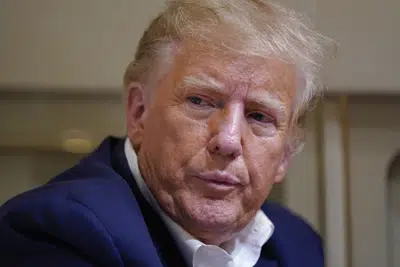
A grand jury indictment is one of three ways that someone can be charged with a federal crime. Those three ways are:
- Indictment. The U.S. Constitution requires that federal felony prosecutions begin with an indictment. Most federal white collar crimes are felonies and thus require an indictment. To obtain an indictment, a prosecutor presents proposed charges to a grand jury (typically a group of 16-23 people). At least 12 of these jurors must vote to affirm the proposed charges for an indictment to be issued.
- Criminal Information. To charge someone via a “criminal information”, a prosecutor must present a judge with sufficient evidence of wrongdoing to show that probable cause of some crime exists. If the judge agrees with the prosecutor, then the accused person will be formally charged and arrested or arraigned.
- Criminal Complaint. A criminal complaint (also known as a felony complaint) is a written accusation of crime(s) prepared by a prosecutor in conjunction with law enforcement. A criminal complaint must be followed by either a criminal information or an indictment to continue holding someone in custody after a certain time period.
If the prosecution believes that time is critical, they can use a criminal information or criminal complaint to charge and arrest someone quickly, even if that charge is for a federal felony. However, if the charge is for a felony, the prosecution must still obtain a grand jury indictment after that in order to proceed with their case (unless the defendant chooses to waive that requirement).
Grand juries at the state level
About half of U.S. state governments also employ grand juries for certain criminal accusations, but the composition and rules of state grand juries differ from one state to the next.
For example, in Florida, the only crime that a grand jury is needed for is first degree murder. Florida statewide grand juries consist of 18 members, with a quorum of 15 needed to issue an indictment.
In contrast, in New York, a grand jury may consist of anywhere from 16-23 sitting jurors. There are several possible outcomes of a New York grand jury proceeding:
- The grand jury can issue an indictment.
- The grand jury can direct the prosecutor to file a criminal information accusing the subject of a lesser offense that doesn’t require an indictment under New York law.
- The grand jury can dismiss the proposed charges, in which case the subject will never know they were even investigated.
- The grand jury can refer a matter to a family court.
What crimes require a grand jury indictment in New York state?
The New York State Constitution requires a grand jury indictment in any case where a person is charged with a felony, unless the accused person waives the grand jury process in open court and in writing.
Jury vs Grand Jury: What’s the difference?
A normal (trial) jury is a group of normal citizens who decide whether or not someone charged with a crime is guilty as part of a criminal trial. In contrast, a grand jury (grand just means big) is a larger group of normal citizens who decide whether or not someone should even be charged with a crime. If a grand jury decides that someone should be charged with a crime, then that person will go to a trial where a normal trial jury will decide whether or not that person is guilty.
Key differences between trial juries and grand juries include:
- A trial jury decides whether or not someone is guilty of a crime. A grand jury only decides whether or not it is likely enough that someone has committed a crime to warrant formally charging them with that crime (at which point they would then go on trial with a normal jury).
- A trial jury decides whether or not they are sure “beyond a reasonable doubt” that someone has committed a crime. In contrast, a grand jury only decides if it is “more likely than not” that someone committed a crime (a strictly weaker criterion).
- A trial jury’s guilty verdict must be unanimous, but a grand jury’s “more likely than not to be guilty” decision must only be agreed upon by a supermajority. The exact size of the supermajority needed for a grand jury indictment differs by jurisdiction.
Why are grand juries used?
Grand juries are constitutionally guaranteed for many federal crimes:
“No person shall be held to answer for a capital, or otherwise infamous crime, unless on a presentment or indictment of a grand jury…”
Fifth Amendment to the U.S. Constitution
Additionally, sometimes grand juries may be used even when not required. Reasons for using grand juries include:
- Making it more difficult for overzealous or politically-motivated prosecutors to bring unfounded cases against innocent people.
- Allowing witness testimony to be provided without damaging the privacy and reputation of someone who is ultimately innocent.
What is a “charging instrument”?
A “charging instrument” is lawer-speak for a legal procedure used to formally charge someone with a crime. The three types of charging instruments are (1) grand jury indictment, (2) criminal information, and (3) criminal complaint. Each of these charging instruments is just a document that has been approved by the appropriate channels (e.g. a grand jury or judge) and now carries legal weight.